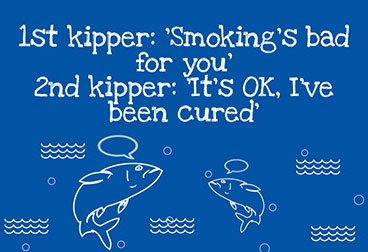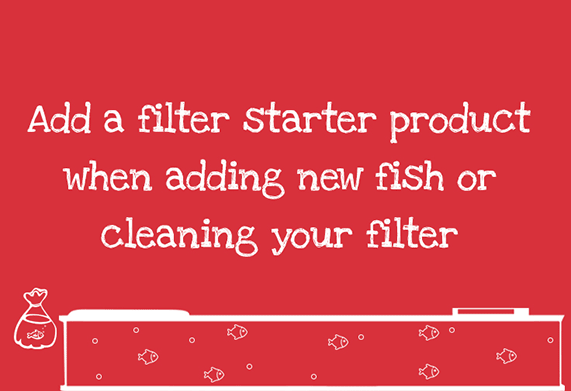What is ‘new tank syndrome’?
‘New tank syndrome’ is commonly experienced in the first weeks of a new aquarium and is caused by an immature filter and excess waste.
New Tank Syndrome refers to the problems that can arise in an aquarium when there is a build-up of invisible, toxic compounds. This issue is most likely to occur when the filter in a new aquarium is maturing.
It takes time for the full population of beneficial bacteria to establish in the filter, which is necessary for processing all the waste produced by the fish. It can typically take up to 2 months for the bacteria to reach a level where they can effectively handle the waste. During this time, it is important to monitor water parameters and take steps to ensure the health and well-being of the fish.
‘New Tank Syndrome’ is a term used to describe problems that occur due to the build-up of invisible, toxic compounds in an aquarium. It gets its name as the issue is most likely to occur when your filter is maturing when starting a new aquarium. The full population of friendly bacteria can take up to 2 months to establish in your filter to a level where they are able to process all the waste being produced by your fish.
New Tank Syndrome is extremely common and can be a very frustrating and upsetting start to fish keeping as it often results in the death of your lovely fish. However, understanding its causes can help you to minimise or avoid problems completely.
Understanding the role of your filter, particularly the biology of the bacteria-driven Nitrogen Cycle, before you start your aquarium is the best way of preventing new tank syndrome.
The Nitrogen Cycle is a natural biological process that occurs in your filter and helps to maintain a healthy environment for your fish. The video below explains more…
However, this Nitrogen cycle process takes a while to establish in a new filter.
Symptoms of New Tank Syndrome
It helps to be aware of the early signs of new tank syndrome before it’s too late. Here are some common symptoms of new tank syndrome:
1. Cloudy Water: One of the initial signs of new tank syndrome is cloudy or hazy water. This cloudiness is often caused by a bacterial bloom as the beneficial bacteria responsible for breaking down waste and toxins multiply and establish themselves.
2. Ammonia Spikes: During the initial setup phase, there may not be enough beneficial bacteria to effectively convert the ammonia produced by fish waste and decay. This can lead to toxic ammonia levels, which can be harmful to fish.
3. Nitrite Buildup: Nitrite is formed by the breakdown of ammonia by beneficial bacteria. While nitrite is less toxic than ammonia, high levels can still be harmful to fish. Our testing kits allow you to test the water for Ammonia, Nitrite, Nitrate, water hardness (dip test only) and pH.
4. Fish Stress and Disease: Fish in a new tank suffering from new tank syndrome may exhibit signs of stress, such as increased aggression, loss of appetite, unusual swimming patterns, or visible signs of illness like fin rot or white spot disease (ich). The compromised water quality can weaken the immune system of fish, making them more susceptible to disease.
5. Algae Growth: Excessive algae growth, such as green water or algae covering the tank surfaces, can also be a symptom of new tank syndrome. Nutrient imbalances and high levels of dissolved organic matter can create favourable conditions for algae to bloom.
Can New Tank Syndrome kill fish?
The combination of high ammonia and nitrite levels, poor water quality, and a weakened immune system caused by stress can be fatal to fish. If not treated quickly, the toxic environment created can be deadly to your fish.
Symptoms of severe New Tank Syndrome include gasping for air at the surface of the water, lethargy, and rapid gill movements. If you notice any of these symptoms in your fish, it’s important to act quickly to treat the situation.
Our top tips for avoiding New Tank Syndrome:
- Adding a product like Fast Filter Start when you introduce fish will help your filter bacteria mature faster.
- Introduce fish gradually, starting with a few strong species. Once the filter is mature (there is no Ammonia or Nitrite) add a few fish at a time until you reach the advised maximum stocking level for your aquarium, this allows the friendly bacteria to grow to match the waste being produced by the fish.
- Feed sparingly in the first few weeks, once or twice a day, removing any uneaten food after 5 minutes. More fish die of over feeding (uneaten food left to rot) than underfeeding.
- Monitor your water quality! Many water problems are invisible so don’t just sit back assuming everything is ok in there. Test the quality and make a note of the results.
- Carry out regular water changes – 20% once a week in new aquariums- this dilutes toxic waste compounds (ammonia and nitrite) to help whilst the filter matures. Later you will be able reduce water change frequency to 25%, once a month.
Just remember that patience and vigilance are key. Don’t rush, enjoy your aquarium!
FAQs
How do I know if my tank has cycled?
To determine if your fish tank is cycled and ready for fish, you should test the water for ammonia, nitrite, and nitrates. If the ammonia and nitrite levels are at zero and the nitrate levels are less than 30ppm, then your tank is cycled and you can safely add a few small fish.
How long does new tank syndrome last?
New tank syndrome can last anywhere between 2-12 weeks, depending on the severity of the issue. During this time, it’s essential to monitor water parameters and take measures to reduce stress on your fish. This can include regular water changes and providing adequate filtration and aeration.
How do you treat new tank syndrome in fish?
• Install a good filter system to help remove the toxic waste from the tank.
• Do regular water changes to dilute ammonia and nitrites.
• Add beneficial bacteria to help speed up the cycle of your tank.
• Make sure the tank is well aerated and oxygen levels are high.
• Keep feeding to a minimum until your tank is fully cycled.
How long does it take for fish to adjust to a new tank?
It typically takes 3-7 days for fish to adjust to a new tank, depending on the stress factors associated with the transition. The presence of other fish in the tank, water quality, diet, and being familiar with their new environment can all contribute to how fast they adjust.
It may hide for several days as it adjusts to its new surroundings and navigates changes in territory. Alternatively, the fish may start swimming around immediately, exploring its new environment. In some cases, the fish may choose to hide in a corner to feel more secure.


